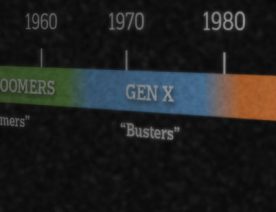
August 31, 2022
A new in-depth survey of 16- to 40-year-olds shows that members of the Gen Z and Millennial generations are active consumers of news and information, with nearly a third of them willing to pay for it. But their relationship with the news is complex — their trust in the press is low, many are experiencing digital fatigue, and they are worried about misinformation in both traditional and social media.
News consumption among Americans ages 16 to 40 is high. Seventy-nine percent report getting news daily. Thirty-eight percent describe themselves as active seekers of news and information. And a third pay for news subscriptions. Millennials and Gen Z get news frequently from social media, but also use a wide range of sources — including traditional news outlets. They follow a variety of news topics every day, including so-called “hard news”.

Gen Z and Millennials have both traditional and novel views of what they want from the press. Majorities, for instance, want news outlets to be fair to all sides, be neutral, and be accurate. They also want the news to provide diverse points of view, and to help people understand communities and people unlike their own.
At the same time, these Americans show unmistakable signs of news fatigue and are deeply troubled by misinformation online. Fewer 16- to 40-year-olds than seven years ago say they enjoy getting news, and they are talking less with friends and family about the news. Many also report feeling worn out by being online.
And, overwhelmingly, Americans ages 16 to 40 worry about deception and misinformation. Fully 9 out of 10 feel misinformation is a problem. Seven in 10 feel they personally have been victims of it. And they are unsure who to blame for the misinformation crisis. Indeed, Gen Z and Millennials are as likely to blame the news media — a group that largely sees itself as fighting misinformation — as they are politicians or the social media platforms.
AMONG THE STUDY FINDINGS:
- Millennials and Gen Z use traditional news outlets, not just social platforms. Nearly three-quarters of 16- to 40-year-olds (74%) get news and information at least weekly from traditional news sources such as national or local TV and newspapers, including their websites or apps. Fully 45% do so daily. Most continue to rely on social media more heavily as a pathway to news; 91% get news there at least weekly. Nonetheless, these findings contradict the stereotype that traditional outlets have no place in the life of younger consumers. Of those who use traditional media daily, 28% get news from local radio stations or newspapers either in print or online, 29% from national radio programs or newspapers, and similar numbers for local and national TV-based outlets.
- Millennials and Gen Z continue to pay for news. In all, 28% pay out of their own pocket for news content such as magazines, newspapers, and news apps. Paying for news also increases with age, as older Millennials are the most likely to pay for news (36%) — twice the rate of Gen Z (18%). In 2015, among Millennials then, 30% paid for the same types of news out of their own pocket.
- These generations have both traditional and novel expectations from the news media. A majority (61%) say they want the news media to be fair to all sides, to verify and get the facts right (69%), and to be neutral (57%). Almost as many (55%) say it is very or extremely important for the press to provide diverse points of view. About half consider it important for the press to help people understand communities unlike their own (52%) and to report on solutions to society’s problems (51%).
- At the same time, enjoyment of the news is falling. By nearly every measure, the numbers for whether people enjoy the news and how they use it are lower than seven years ago. Today, less than a third (32%) of 16- to 40-year-old Americans find the news enjoyable or entertaining. Seven years ago, 53% said they enjoyed getting the news. That represents a drop of 21 percentage points. We find a similar drop in people talking about news. Seven years ago, 53% of Millennials said they liked to talk with friends and family about the news. Today that number has fallen to 37% of Gen Z and Millennials.
- Millennials and Gen Z are feeling digital fatigue and have adopted different tactics to combat it. While 9 in 10 Millennials and Gen Z report being online more than two hours a day, 3 in 10 report feeling worse the longer they are connected. Seventy-nine percent report doing something in response. About half (47%) say they pay attention to the way certain products try to keep them engaged, 27% try to set limits on the time they spend online, and 23% use apps or settings to track their time.
- Trust in the press is low, but so is trust in social media. Local news fares better than national. Only about a quarter of 16- to 40-year-olds have a positive view of the news media generally or national news outlets particularly (23%). Trust in local news media, while not great, is higher. About a third (35%) have favorable attitudes toward local media outlets. But when we dig deeper, there are signals of higher confidence. For instance, most Gen Z and Millennials find local TV stations or their websites (53%), local newspapers in print or online (59%), and even national newspapers in print or online (54%) as completely or very reliable when getting “hard news” topics. The numbers are similar for “news you can use” topics such as news about health or products.
- Many believe the media fails to accurately cover communities of color and immigrants in America. Nearly half (49%) believe media coverage of immigrants is slightly or totally inaccurate, and a similar percent say the same about Black Americans (48%) and Hispanic Americans (45%). Coverage of white Americans is viewed more positively, though 36% still consider it mostly inaccurate.









